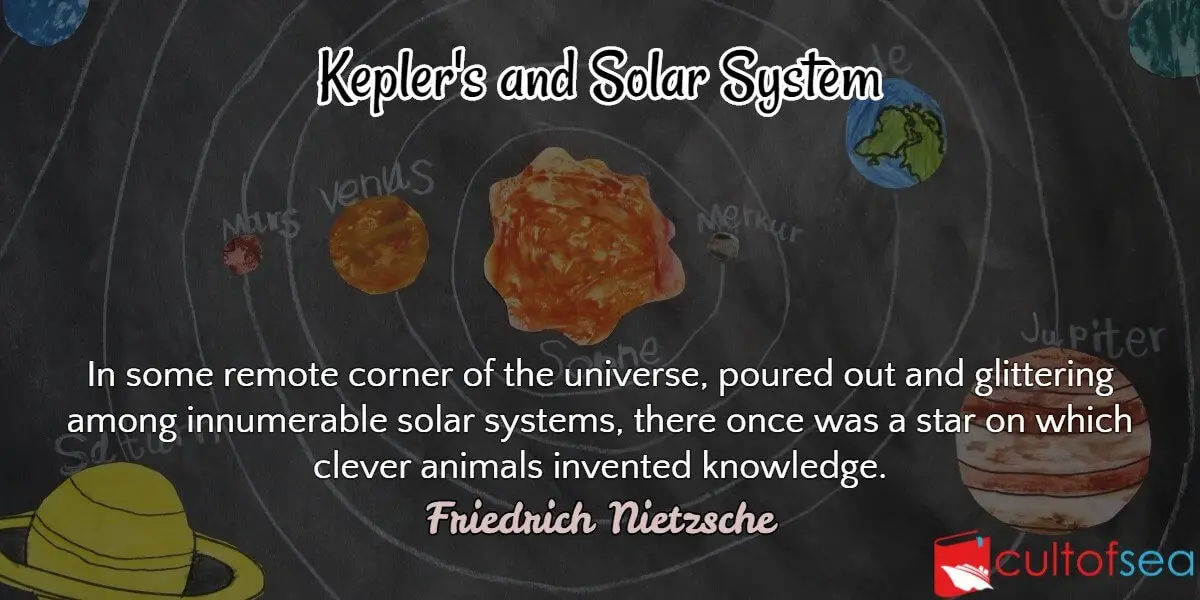Solar system
- Consists of the Sun, the planets, the planetary satellites, asteroids, comets and meteors.
- Sun has a dia (865,000 miles) of more than 700 times larger than all the other bodies taken together.
- It is the only body of the solar system which radiates light. It rotates about its own axis, completing one rotation in about 25 days.
- There are eight non-luminous planets which we see only because they reflect light and they exhibit phases like the moon.
- In order of distance from the sun, they are Mercury, Venus, Earth, Mars, Jupiter, Saturn, Uranus and Neptune.
- Between the orbits of Mars and Jupiter, there are a large number of minor planets called asteroids.
The planets are divided into 2 groups:
- The 4 small planets of the inner group (Mercury, Venus, Earth and Mars) and
- The 4 large planets of the outer group (Jupiter, Saturn, Uranus and Neptune).
Inferior planets – Mercury and Venus which are closer to the sun than the Earth.
Superior Planets – The 6 planets which are further away from the Sun than the Earth.
All planets rotate on their own axis and revolve around the sun in an anti-clockwise direction (eastward) in elliptical orbits. In general, the moons revolve about the parent planet in the same direction (anti-clockwise) as the planets revolve around the Sun. Like our Moon, satellites are not self-luminous. We see them due to the sunlight they reflect.
Planetary Motion
Kepler’s First Law
- States that all planets revolve around the Sun in elliptical orbits with the Sun situated at one of the foci of the eclipse.
- An ellipse is a locus of a point, such that the sum of the distances from the point to the two foci of the ellipse is always constant, as shown in the fig.

Though very correctly, the orbits of planets are elliptical, they are in fact nearly circular. The ellipticity of the Earth’s orbit is only about 1/7200. The orbits of various planets are always coplanar.
Kepler’s Second Law

- States that the radius vector of a planet (a line joining the centre of the sun to the centre of the planet) sweeps out equal areas in equal periods.
- For equal areas to be swept out in equal periods, the planets move faster in its orbit when it is closer to the Sun and slower when it is further away.
- A planet is said to be at Aphelion when in its orbit it is further away from the Sun.
- A planet is said to be at Perihelion when in its orbit it is nearest to the Sun.
- Because of the Sun is eccentric (not at the centre) within the Earth’s orbit, at aphelion, the Earth is 45 million miles and at the perihelion 91.35 million miles from the Sun. Average distance is 93 million miles. The eccentricity (not concentric) of the Earth’s orbit is about 1/60.
- In the terms aphelion and perihelion we use the suffix ‘helion’ (from the Sun) as the distances were expressed from the Sun. If the distances are expressed from the Earth, we use the suffix ‘gee’ (for geographic). Thus, when the Sun is in its apparent orbit or the Moon in its orbit around the Earth, is nearest the Earth, they are said to be at perigee, and when farthest away from the Earth, they are said to be in apogee.
- Similarly, when distance are expressed from the Moon, we use the suffix ‘cynthion’ or ‘lune’ leading to the terms apocynthion or apolune and pericynthion or perilune.
Kepler’s Third Law
- Gives the relationship between the distance of a planet from the Sun and the time it takes to complete one revolution around the Sun.
- According to this law, planets which are closer to the Sun have a greater angular velocity than planets which are further away.
- Angular velocity is the angle by which an object revolves in a certain time.
- Angular velocity can be expressed in degrees per unit time (second, minute, hour, etc.), radians per unit time, or even revolutions per unit time.
The planets used for celestial navigation are Venus, Mars, Jupiter and Saturn. Apart from the Sun and Moon, Venus is the brightest celestial body, visible in the mornings before sunrise or evenings after sunset. Some of the planets have satellites or moons. Mercury and Venus have no moons.



The evolutionary universal technology with solar system and integrated planetary path are part of ancient artifacts created to bring in unified field based on Kepler’s Laws. However planetary System complexity were well defined through our scientist over many years prior by our spiritual meditating Rishis